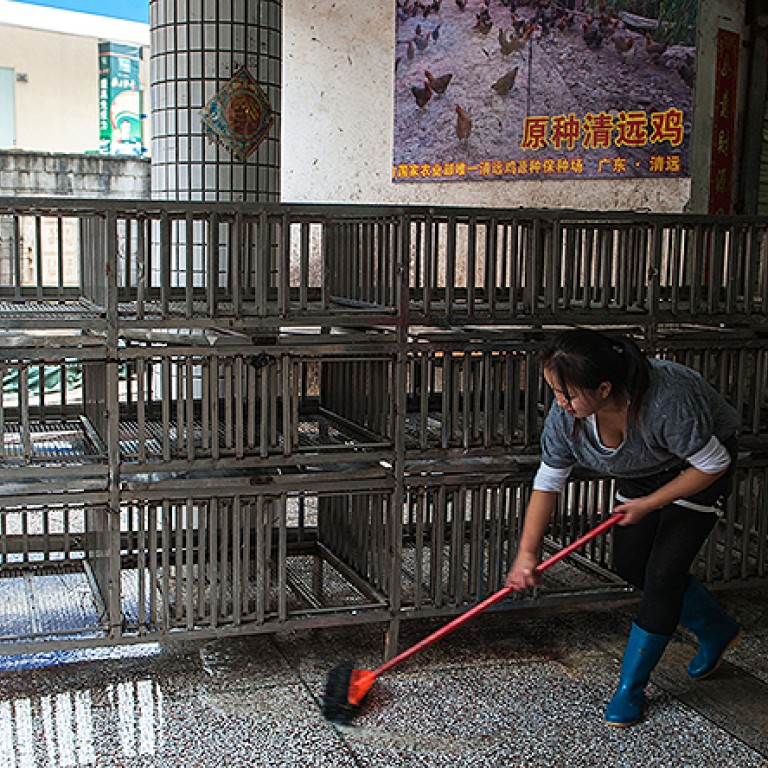
Hongkongers warned to avoid mainland wet markets as H10N8 bird flu kills woman
A professor who had warned of the threat to humans from the H10N8 bird flu says more people are likely to be infected after the virus claimed the life of a Jiangxi woman in the first known human infection.
A professor who had warned of the threat to humans from the H10N8 bird flu says more people are likely to be infected after the virus claimed the life of a Jiangxi woman in the first known human infection.
Hongkongers, meanwhile, have been warned not to visit mainland wet markets or come into contact with live poultry.
The warning came after a 62-year-old man from Yangjiang in Guangdong was yesterday confirmed as the fifth person in the province to be infected with another deadly bird flu strain, H7N9. He is in a critical condition.
The professor, Chen Ze, of the Shanghai Institute of Biological Products, a research arm of a state-owned pharmaceutical firm, said H10N8, which was previously found in wild birds, had mutated to infect humans.
"There is a chance of more cases of human infection in the future," said Chen, who in April warned of the threats from H10N8 and H6N6 amid the initial spread of human H7N9 cases.
Chen and his team isolated the H10N8 virus from the Dongting Lake wetland in 2007. Tests on mice found that the virus easily infected mammals.
"Our findings showed the virus was capable of infecting humans and it has the capability of mammal-to-mammal transmission, but whether there is going to be human-to-human transmission is hard to tell at the moment," said Chen.
He said the case for closing live poultry markets on the mainland had become stronger, at least in flu season, to reduce risks.
The woman who died in Jiangxi was 73 years old. She was admitted to hospital on November 30 with severe pneumonia and died on December 6.
Jiangxi has yet to close live poultry markets or cull any birds because of the woman's death.
In Hong Kong, Secretary for Food and Health Dr Ko Wing-man urged Hongkongers not to visit wet markets with live poultry in flu-affected areas and to avoid direct contact with birds and their droppings.
Still, he said tests had found the H10N8 virus to consist mainly of bird genes - meaning its ability to jump from person to person remained relatively poor.
University of Hong Kong microbiologist Yuen Kwok-yung said there was insufficient evidence to assess the risk of the new strain for humans. "Under an assessment of the current situation, human infection only appears sporadically. There is no need to be overly worried," he said.
Know Your Flu
Differences between the H10N8 and the H7N9 bird flu strains:
H10N8: detected in water birds in China in 2007
H7N9: detected in live chickens and wet markets in China since humans began being infected in March
H10N8: unknown
H7N9: likely to be from bird to human in wet markets
H10N8: unknown but believed to be low, as its genetic composition mostly consists of bird genes
H7N9: limited, only suspected to have been transmitted among people in four patient clusters
H10N8: severe pneumonia and respiratory failure
H7N9: severe pneumonia associated with lower respiratory tract, fever, cough, shortness of breath
H10N8: 1 (on the mainland)
H7N9: 143 (on the mainland, in Taiwan and Hong Kong)


